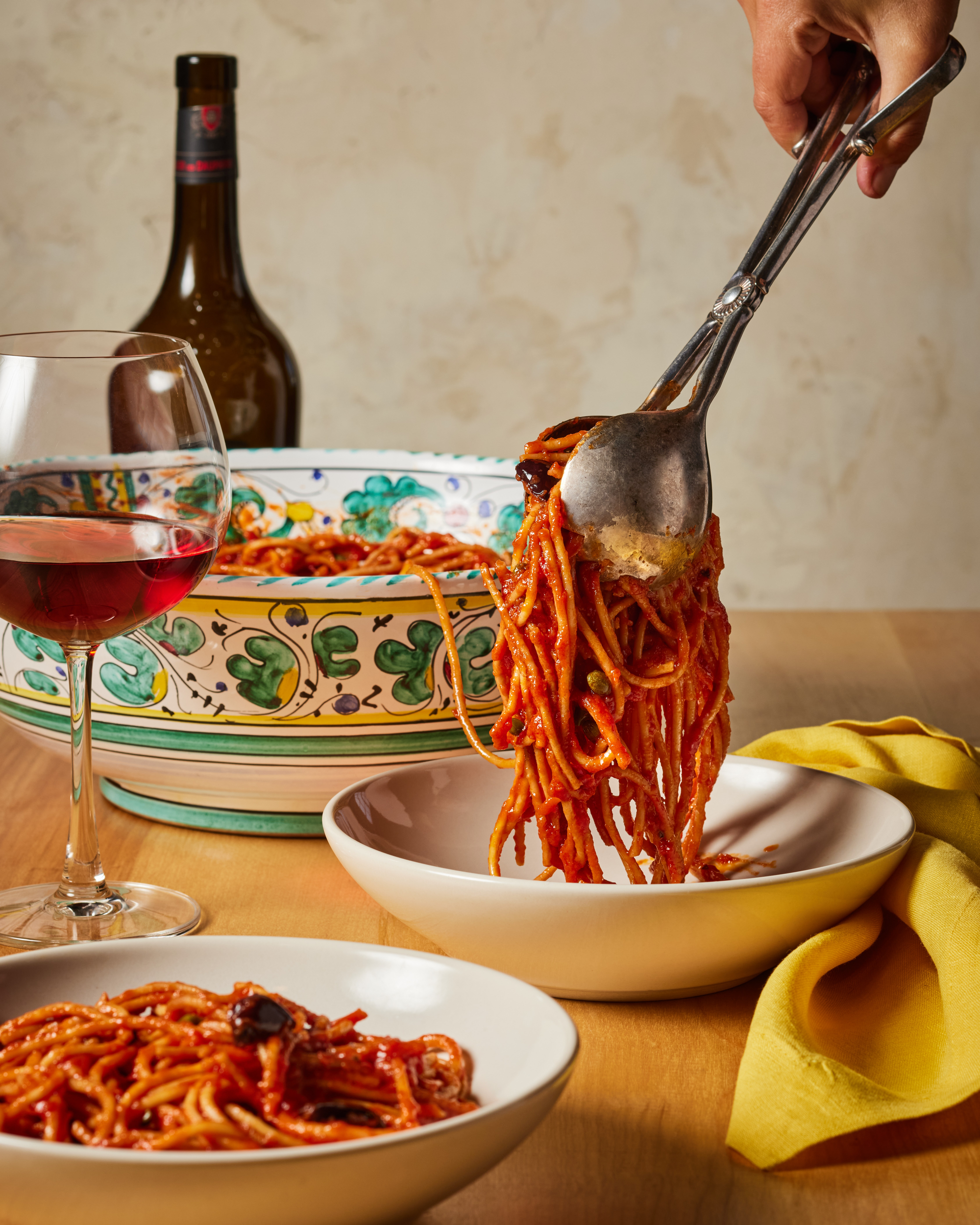Sunday Paper Recommends—Week of November 9, 2025

This week at The Sunday Paper, we're sharing a new book, podcast, and film that we believe will add inspiration to your days. We hope these suggestions open your heart and mind and encourage you to come together for meaningful conversations.
What We’re Watching
Vince Gilligan, the creator behind the hit series Breaking Bad, looked at everything on TV right now and thought, How can I make something really different? The answer to his question is Pluribus, his new Apple TV science fiction series. And it is different. The show centers on Carol, played by Rhea Seehorn. Carol is one of a handful of people in the world who is somehow immune to a "virus" that turns people into endlessly happy citizens. It's a wild, confusing, entertaining journey of a series that will have you wide-eyed until the end.
What We’re Reading
If Cheryl Hines received a penny for every time she made someone laugh, she'd be the wealthiest woman in the world. Best known for her role in Curb Your Enthusiasm, Hines is a prolific actress known for her wit, humor, and grace. Her new book, Unscripted, offers fans a deeper look at her life, spanning from small-town Florida to the big screen to a marriage with a giant American activist and political figure. Her pages are filled with stories that are hilarious, heartfelt, and utterly human, just as she is. She also shares about the causes dear to her. Unscripted is a joyful, inspiring read about a woman who anchored her life in family, dreams, and laughs.
What We’re Listening To
In "The Economics of Everyday Things," journalist Zachary Crockett explores standard services and things in our lives we take for granted and know little about—and it's fascinating. In succinct episodes, he pulls at the threads of business ranging from billboards to airplane food to laundromats and beyond. Crockett interviews the business owners and weaves in industry history. He asks great questions, which merit fascinating responses. Do you know what one of the biggest customers of laundromats is? You'll just have to listen to learn. But we promise, these episodes are worth it.
Sunday Paper Recipe
Daniele Uditi’s Spaghetti alla Puttanesca

FEEDS 4 TO 5
TOMATO BROTH
Extra-virgin olive oil
1 garlic clove, minced
1 24.5-ounce (700g) jar fresh tomato puree (passata or “strained tomatoes”; Mutti or Pomi)
Kosher or coarse sea salt
PASTA
16 ounces (about 500g) Charred Spaghetti (recipe follows)
1/2 cup (120ml) good-quality classic Italian marinara or tomato-basil sauce (Mutti)
2 to 3 teaspoons Calabrian chili pepper paste (Tutto Calabria crushed peppers or paste)
10 good-quality oil packed anchovy fillets (Agostino Recca, chili pepper–spiced or regular)
1/3 cup (50g) drained and rinsed capers
1/3 cup (50g) drained, pitted kalamata olives, broken into 4 to 5 pieces with your fingers
Small handful (3 to 4 tablespoons) finely chopped flat-leaf parsley, divided
Extra-virgin finishing olive oil, for drizzling
Make the tomato broth: Drizzle enough olive oil in a medium, cold stockpot or Dutch oven to lightly coat the bottom (about 2 tablespoons). Add the garlic and turn the heat to medium. Gently sauté the garlic, stirring occasionally with a wooden spoon, until fragrant and barely beginning to brown on the edges, 3 to 4 minutes. Add the fresh tomato puree, 3 cups (720ml) of water, and 21/2 to 3 teaspoons salt and bring to a simmer. Turn off the heat, taste, and season the tomato broth with more salt, if needed.
Cook the pasta and make the sauce: In an extra-large skillet or pan large enough to fit the Charred Spaghetti with a little extra room (see Tips), heat about 1/4 cup (60ml) of olive oil over medium heat. Add the charred spaghetti, pushing it around the pan with a wooden spoon until the strands are evenly coated in olive oil, and gently cook for about 1 minute.
Add 11/2 to 2 cups (480ml) of the hot tomato broth to the skillet, just to barely cover the pasta.
Increase the heat to medium-high, bring the broth to a boil, and gently shuffle the pasta back and forth across the bottom of the pan with the wooden spoon to keep it from sticking.
When the pasta soaks up the broth, keep adding more, about 1 cup (240ml) at a time, and push the pasta around in the pot until it’s soft enough to stir. After about 10 minutes, most of the broth should have been absorbed by the pasta. Add the tomato sauce and 2 teaspoons Calabrian chili pepper paste and continue to cook the pasta, stirring, for about 2 minutes. Adjust the spiciness with more chili peppers, then gently stir in the anchovies, capers, olives, and two-thirds of the parsley.
Serve: Divide the pasta among four to five plates, drizzle a little finishing olive oil on top, and scatter a little parsley over each. Eat the pasta like an Italian: right now.
CHARRED SPAGHETTI
1 16-ounce (about 450g) package good-quality spaghetti (Mancini or De Cecco; see Tips)
Prep: Put a sheet pan or other rimmed metal pan that will fit the spaghetti without breaking it within 2 to 3 inches (5 to 7.5cm) of the broiler. Turn the broiler to high and let the pan heat for about 2 minutes.
Toast the spaghetti: Remove the hot pan from the oven.
If your broiler covers a larger surface area, arrange as much spaghetti on the pan as will fit beneath or within a few inches of the heat source. For example, if your broiler has a single flame running down the center of the oven, put about a third of the spaghetti in the middle of the hot pan and fan out the spaghetti so the pile is only 3 to 4 inches (7.5 to 10cm) wide. The strands don’t need to be in a single layer but shouldn’t be more than two to three layers deep.
Broil the spaghetti for about 30 seconds, take the pan out of the oven, and use tongs to gently redistribute the strands so they toast evenly. Continue to broil the spaghetti strands, checking and redistributing them every 15 to 20 seconds (remove any that are already well toasted), until most are light golden brown and the surface has blistered, 11/2 to 3 minutes; the pasta should look like little toasted bread sticks. (The length of time to toast all the spaghetti will depend on your broiler’s strength and proximity.) Remove the toasted spaghetti from the hot sheet pan.
Discard any strands of pasta that are dark brown or deeply burnt in spots (taste a small piece to make sure it’s not bitter); if you’ve only discarded a dozen or so strands, you’ll have plenty for the pasta, but otherwise toast a few more strands.
If not making the pasta right away, let the spaghetti cool completely, wrap in plastic wrap, and set aside for up to 6 hours.
TIPS
Like when toasting nuts, the oven-toasted spaghetti quickly goes from barely colored to burnt. It’s a good idea to get a backup package of spaghetti in case you burn the first.
An extra-large (14-inch/35.5cm) sauté pan, cast iron skillet, or round braising dish is large enough to cook the dry, toasted spaghetti strands (the spaghetti will lay flat in most 12-inch/30.5cm skillets, but it is difficult to move the pasta as it cooks without breaking it in half). A metal or cast iron rectangular roasting pan or dish (8x12-inch/20x30.5cm) can also be used. If you’re doubling or tripling the recipe, you can even use a large turkey roasting pan.
Daniele’s favorite anchovies, Agostino Recca, are larger and meatier than most; if you use another brand, use 12 to 14 anchovies. Fresh Italian-style tomato puree, also called passata or “strained tomatoes,” is sold in jars or boxes and made from fresh, not cooked, tomatoes.
Excerpted from Phil’s Favorites: Recipes from Friends and Family to Make at Home. Copyright © 2025, Phil Rosenthal and Jenn Garbee. Photography Copyright © 2025 by Andrea D’Agosto and Richard Rosenthal. Reproduced by permission of Simon Element, an imprint of Simon & Schuster. All rights reserved.
Please note that we may receive affiliate commissions from the sales of linked products.





